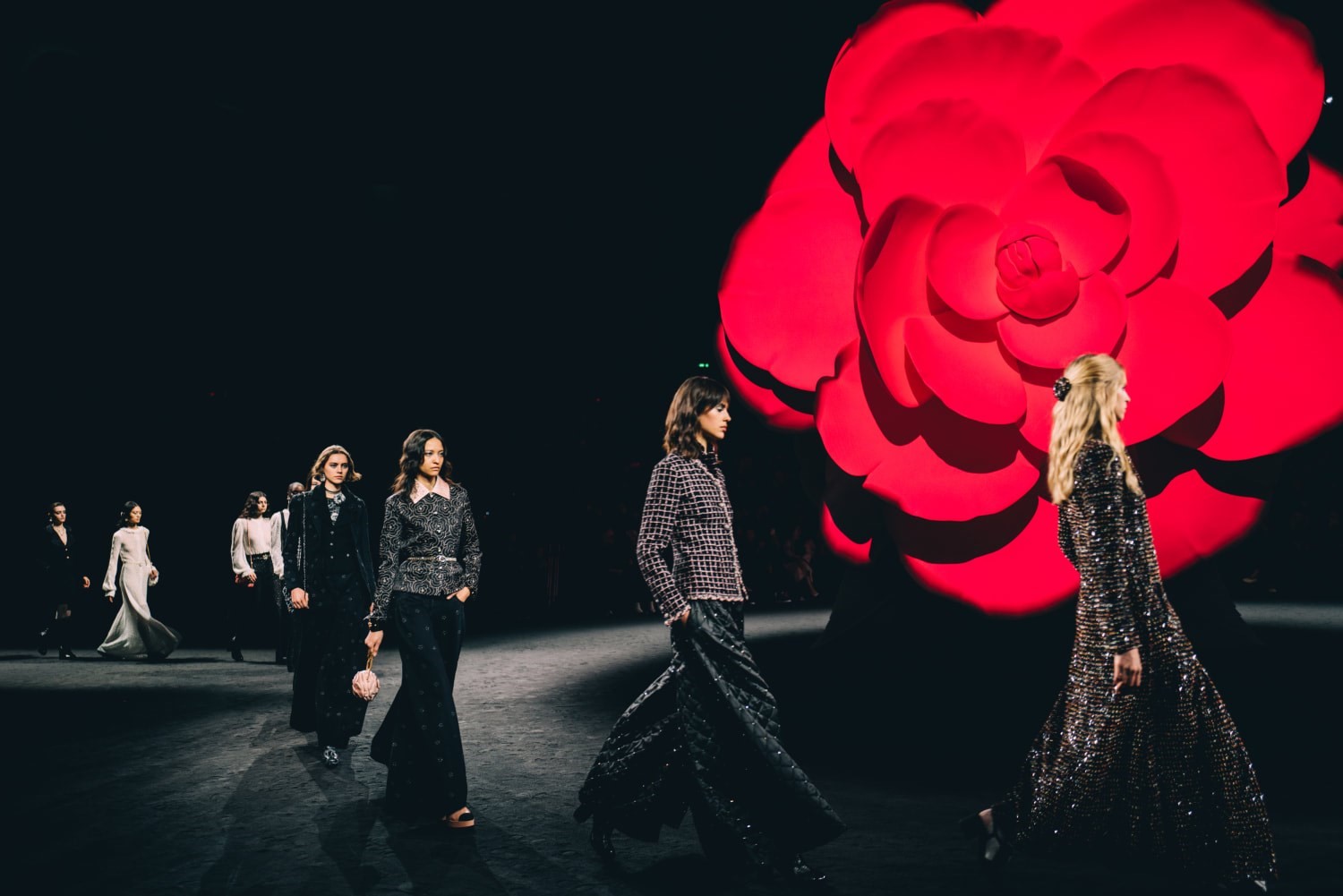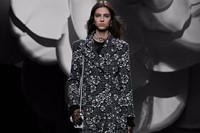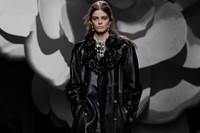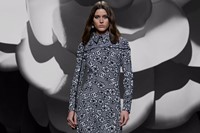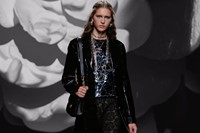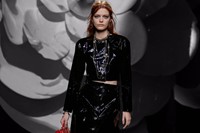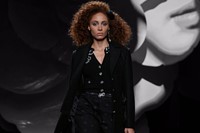“The camellia is more than a theme, it’s an eternal code of the house.” Virginie Viard is speaking about Chanel, of course – that flower being an inextricable symbol of the label, and one around which Viard’s Autumn/Winter 2023 collection revolved, literally and figuratively. Gargantuan camellias sat at the centre of the catwalk, canvasses for projections of colour and film, like fragmented views of the Chanel women. With the audience circling each, arena-style, the models twisted their way around those blooms, dressed in more iterations of the same.
There are plenty of allusions to be found in camellias, which is one reason why Gabrielle Chanel loved them so. La Dame aux Camélias, Alexandre Dumas fils’ semi-autobiographical novel charting his love affair with the courtesan Marie Duplessis, is the most famous example of the flower – outside the realm of Chanel, that is. Dumas fils’ heroine Marguerite Gautier is nicknamed ‘the lady of the camellias’ due to the fact she wears a red camellia when she is menstruating, and white when she is available to her gentleman callers. The sexual frisson of the flower connects with Chanel’s own liberation – she was, after all, an emancipated woman, never married, with aristocratic lovers of her own. But Chanel also simply appreciated the graphic effect and stylised shape of the natural flower – in the 1920s and 30s, as Chanel’s work became romantic, it was only one of a number of different flowers she would pin or embroider to her dresses. By the 1950s, however, her style had solidified and the camellia became Chanel.
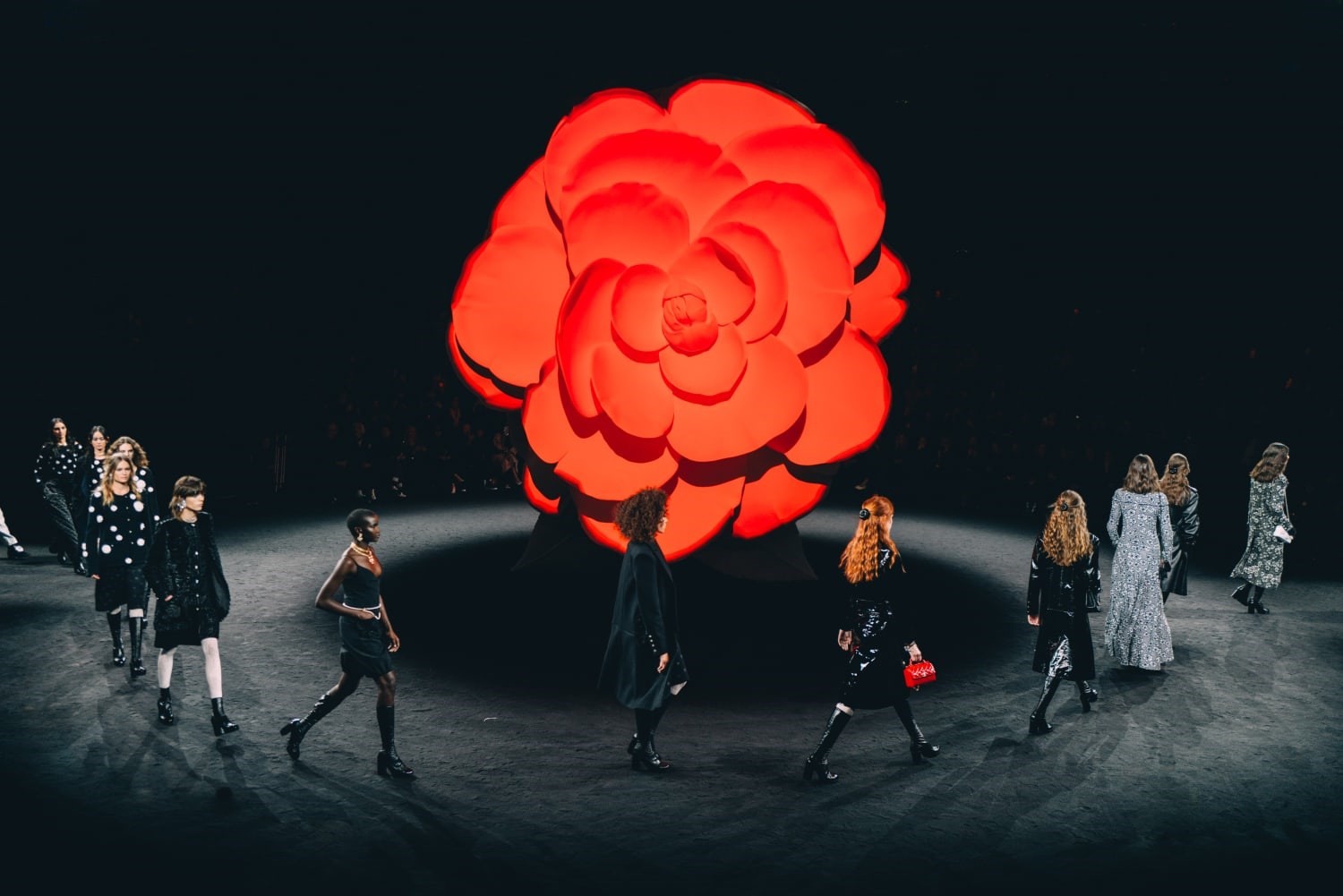
The latter is more in keeping with Virginie Viard’s collections for Chanel, which are direct, pure, easily read and resonant. As with the work of Gabrielle Chanel herself, the focal point is to connect with women, with reality, not to costume them, to fantasise and reinvent them. In the past, Viard’s shows have been based on impressionist painting, in Monte Carlo echoing many and varied Monégasque themes, and recreating the giddy atmosphere of the house’s shows of the early 1990s. This time, the sweet simplicity of the curve-petaled camellia was a leitmotif that blossomed across every conceivable surface.
Flowers were woven into fabrics as two-dimensional pattern, or seemed to push through as three-dimensional appliqué growing from under the fabric of knits and tweeds. They clasped handbags, or sometimes formed the entire shape of a dancing minaudière, which jackets were cut with curved panels, like petals opening around the body. You could also argue that the silky softness of the flower found reflection in the slithery surfaces of chiffons and charmeuses – but that would be a reach.
The colours, however, were clipped straight from a bouquet: white, pale pink, a rich, bloated red, all contrasted with graphic black and grey. Viard reasoned that she liked the strength and the softness of the camellia – which translated to a play on masculine and feminine, always at the heart of Chanel. Sharp tailoring contrasted with floral coats like dandyish smoking jackets; models wore breeches and knickerbockers in hardy tweeds, as if Marguerite Gautier had donned the garb of her lovers, and decided to liberate herself from her gilded cage. Which, like the camellia, is quintessential Chanel.
